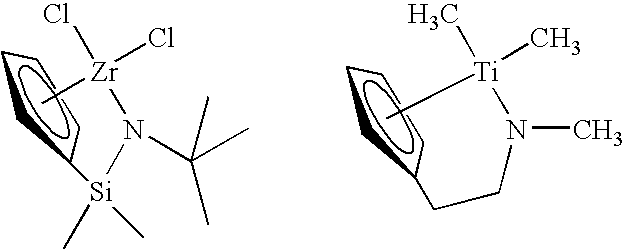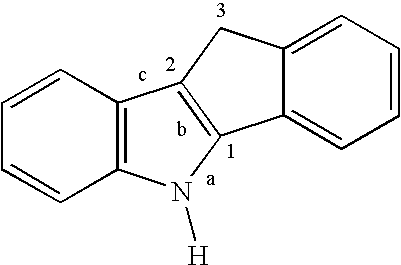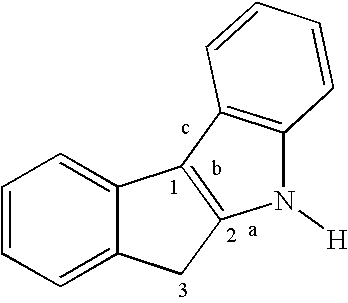Catalysts for making polyolefins
- Summary
- Abstract
- Description
- Claims
- Application Information
AI Technical Summary
Benefits of technology
Problems solved by technology
Method used
Image
Examples
example 4
demonstrates the use of an open architecture indenoindolyl catalyst in a process of the invention for making ethylene copolymers. As shown in Table 1, the copolymers have very low densities, high molecular weight (even though hydrogen was present in the reactor), and narrow molecular weight distributions (2.8-3.0).
Preparation of Supported Catalyst D with Complex A and Borate Co-Catalyst
Grace Davison silica 955 is calcined at 250° C. for 12 h. In a glove-box under nitrogen, a 0.5 M solution of triethylaluminum (TEAL) in heptane (8 mL) is slowly added to 2 g of the calcined silica at room temperature with efficient stirring. After one hour stirring, the treated silica is dried by vacuum at room temperature.
Complex A (29 mg, 0.066 mmol), toluene (5 mL), and triphenylcarbenium tetrakis(pentafluorophenyl)borate [(C6H5)3CB(C6F5)4] (85 mg, 0.092 mmol) are mixed with a sample of the TEAL-treated silica (1.0 g) and the mixture is stirred for 0.5 h. Volatiles are removed under vacuum (about 2...
example 5
demonstrates the use of a borate-activated, open architecture indenoindolyl catalyst in a process of the invention for making ethylene copolymers with very low densities and high molecular weight.
example 6
Preparation of an N—Si—N Bridged Complex
2-Methyl-5,6-dihydroindeno[1,2-b]indole (3.28 g) is suspended in ether (30 mL) and n-butyllithium (6.0 mL of a 2.5 M solution in hexane) is added. After one hour, this mixture is added dropwise to a solution of dimethyldichlorosilane (4.14 g) in ether (20 mL). The mixture is stirred for three hours and filtered. The filtrate is evaporated to give a beige solid (4.68 g). The residue is dissolved in ether (60 mL), and a mixture of t-butylamine (1.20 g) and n-butyllithium (6.0 mL of a 2.5 M solution in hexane) is added dropwise. After 2 h, the mixture is evaporated and the residue is extracted with pentane. The volume of the mixture is reduced to 30 mL, and n-butyllithium (12 mL of 2.5 M solution in hexane) is added. After stirring overnight, the yellow solid is collected by filtration, washed with pentane, and dried. Yield: 4.49 g. The product is dissolved in ether (100 mL) and methyllithium (18 mL of a 1.4 M solution in ether) is added. The mix...
PUM
| Property | Measurement | Unit |
|---|---|---|
| Temperature | aaaaa | aaaaa |
| Temperature | aaaaa | aaaaa |
| Temperature | aaaaa | aaaaa |
Abstract
Description
Claims
Application Information
 Login to View More
Login to View More - Generate Ideas
- Intellectual Property
- Life Sciences
- Materials
- Tech Scout
- Unparalleled Data Quality
- Higher Quality Content
- 60% Fewer Hallucinations
Browse by: Latest US Patents, China's latest patents, Technical Efficacy Thesaurus, Application Domain, Technology Topic, Popular Technical Reports.
© 2025 PatSnap. All rights reserved.Legal|Privacy policy|Modern Slavery Act Transparency Statement|Sitemap|About US| Contact US: help@patsnap.com



